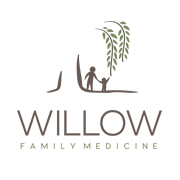Patient Education & Resource Library
The following resource library is under development. As it evolves, it is our hope the below information will compliment the care patients receive in our program so they may make the most appropriate, informed, and evidence based decision(s) for themselves and their family.
While much time and energy goes into the collation and creation of patient resources, they are imperfect and not a substitute for medical care. It is also important for a patient to discuss a given resource (obtained here or elsewhere) with their skilled care provider as not all information is suitable or applicable to a patient and in fact, could be harmful when applied to the wrong clinical scenario (e.g most babies are best served by feeding on demand, however, there may be instances where this is not appropriate given their age and stage of life such as a jaundice new born who may sleep through hunger cues).
Please ensure you talk to your care provider about the suitability of any patient care resource. And finally, the below information does not represent a complete collection of feeding resources and subject to change without notice as more information (and the time to update) is made available.
Our program and providers are committed to facilitating a gender inclusive experience for patients. However, not all resources, despite their helpful content, are written in this manner.
General Feeding & Early Postpartum Resources
Physician Guide to Breastfeeding - Dr. Katrina Mitchel MD IBCLC
First Few Days (following birth) Toolkit - La Leche League International
The Womanly Art of Breastfeeding - La Leche League International
Kelly Mom - Breastfeeding & Parenting Mental Health Support
YEG Mental Health Support - Local and International Resources
Infant Sleep
Bedsharing - Physician Guide To Breastfeeding - Dr. Katrina Mitchell MD IBCLC
BASIS - Baby Sleep Info Source - Durham Infancy and Sleep Centre (DISC), in the Department of Anthropology at Durham University, UK.
Academy of Breastfeeding Medicine Clinical Protocol #37: Physiologic Infant Care - Managing Nighttime breastfeeding in Young Children.
Early Postpartum Resource Folder - Intended for infants less than 6 weeks old
Dr. Jack Newman MD IBCLC - Breastfeeding & Lactation Medicine Resources
IABLE Breastfeeding Education Handouts
Pediatric Physiotherapy & Occupation Therapy - Webinars by Alberta Health Services pertaining to topics such as, but not limited too, head shape, torticillois, tummy time, complimentary foods, toileting.
Ninni Pacifer - if this pacifer has been recommended and/or discussed by our team with your family you can find a free, short, video on how to use it here. A more in depth, for cost, webinar can be found here. Please note, if you order this pacifer, please make sure to select the Canadian distributor and check your emails for a second shipping invoice that will be paid seperate from the original purhcase, otherwise, your product may not be shipped. There is a learning curve with this pacifer but is often very helpful for families with exclusively body fed infants who require sucking support outside of the breast. Families who mix feed or bottle feed may also benefit. Please discuss with your provider if this tool is right for your family.
Oral Motor Function & Procedure Resources
The below videos are designed to help families better understand why a frenectomy may be necessary, how the procedure is done and how to complete the suggested post-procedure wound care. Please note, a few policies (such as infant freezing to frenectomy site) have changed since videos were created. Please reference our handout for most up to date information. Videos are designed to supplement this information.
What Is a Tongue and/or Lip Tie & Frenectomy
Frenectomy Procedure, Wound Care & Reattachment Prevention
We encourage families to remember that the goal of wound care is to create mild tension at the wound site, ensuring the wound or “diamond” does not close in on itself but rather, heals or fills in over time. It is important to do this in a respectful and non traumatic way for your infant. There may be mild discomfort but not screaming or whimpering. Like many things in life and parenting, there is no one “right” way but rather principles to guide success. Choose the approach that works best for you and your family. Please see our next video on how to complete the wound care.
Post Frenectomy Wound Care - Tongue & Lip
The above video will go through our approach to post frenectomy wound care for both the tongue and lip in an infant 12 weeks post tongue/lingual frenectomy.
Ankyloglossia and Frenectomy - An Ear, Nose and Throat (ENT) Surgeons Perspective
In Edmonton, ENT surgeons do not perform this procedure on infants regularly and many infants are not diagnosed in the hospital or after birth due to the shortage of providers able to do so. Physicians like Dr. Kelly MacGregor are trained in the scissor technique referenced int his video. Please see Oral Restrictions on further discussion of technique and wound care following the procedure.
Container Syndrome & Infant Mobility
Infants, especially those following frenectomy and/or with an oral restriction such as a “tongue tie,” benefit from as little time as possible in “containers” that limit free movement, constrict or prop them “up.” Containers are devices such as car seats, swaddles, swings, strollers, high chairs, walkers, jumpers, and rockers. And while containers, like car seats, are often needed for safety, they should be used for the least amount of time required. This handout reviews the impact of “containers” on infant gross and oral motor development, head shape, and the reduction of post frenectomy complications.
Tongue Mobility and Jaw Development
A short summary of this study.
Pediatrician’s Approach to Tongue Ties
Nested Feeding Postion
The video above provides an example of a nested feeding position. This can be helpful for some families to help support the parent and child’s physiology and connection needs.

